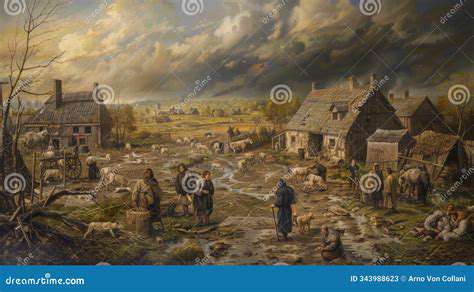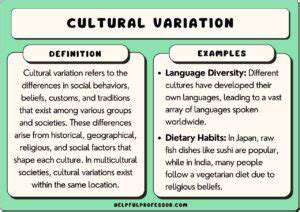The History of the Potato in Ireland

The Causes of the Great Famine
The Great Famine, a devastating period of widespread starvation in Ireland during the mid-1840s, was primarily triggered by a combination of factors, including the devastating potato blight. This fungal disease, known as Phytophthora infestans, rapidly decimated the potato crop, which was a staple food for the majority of the Irish population. The reliance on a single crop made the Irish particularly vulnerable to this disease. This dependence on a single food source left the Irish population extremely vulnerable to any crop failures. The catastrophic loss of this crucial food source led to widespread hunger and suffering.
Beyond the blight itself, several other contributing factors exacerbated the crisis. Land ownership patterns, heavily skewed towards wealthy landlords, often neglected the needs of the tenant farmers. Poor agricultural practices and the lack of diversification in the Irish agricultural system further compounded the impact of the blight. Moreover, the British government's response to the crisis was slow and inadequate, failing to provide sufficient relief to the affected population. This failure to adequately address the crisis further contributed to the immense suffering and loss of life during this tragic period.
Consequences and Legacy
The Great Famine had profound and long-lasting consequences for Ireland. Millions were forced to emigrate, seeking better opportunities and escaping starvation. This mass exodus significantly altered the demographic landscape of Ireland and had a lasting impact on Irish communities worldwide. The famine profoundly shaped Irish identity, fostering a sense of collective trauma and resilience.
The famine also exposed deep-seated social and economic inequalities within Irish society. The stark contrast between the affluence of the landlords and the poverty of the tenant farmers became painfully evident. The famine's legacy continues to shape Irish politics and culture, serving as a stark reminder of the devastating consequences of poverty, inequality, and inadequate responses to crises. The famine created a sense of national identity and a strong desire for change. The traumatic experience of the famine left an indelible mark on the Irish psyche and continues to be a source of reflection and debate today.
The Great Famine resulted in a significant loss of life, with an estimated one million deaths directly attributable to the famine and related diseases. The sheer scale of human suffering during this period is almost incomprehensible. The famine also led to a significant decline in the Irish population, with lasting effects on the country's demography and development.
The Potato Today: A Cultural Icon and Food Staple
The Humble Beginnings of the Irish Potato
The potato's journey to becoming a cornerstone of Irish culture wasn't a smooth one. Introduced to Ireland in the 16th century, it initially faced skepticism and slow adoption. While other crops struggled with the unpredictable Irish climate, the potato thrived, offering a reliable source of sustenance. This initial success laid the foundation for the profound impact the potato would have on Irish society, but it also created vulnerabilities that would later become tragically apparent.
The potato's resilience in harsh conditions proved invaluable to the Irish, especially during the challenging agricultural landscape of the time. Its ability to grow in poor soil and provide significant calories quickly made it a preferred crop, particularly for the growing peasant population. This early adoption laid the groundwork for the potato's later dominance in the Irish diet.
The Potato's Rise to Prominence
As the potato's popularity grew, it became deeply interwoven with the lives of the Irish people. Its ease of cultivation and high yield made it a vital component of the Irish diet, especially for those with limited resources. This reliance on the potato became so profound that it became the backbone of the Irish agrarian economy, shaping food practices and even social structures.
The potato's nutritional value, though not unparalleled, was certainly substantial. It provided essential carbohydrates and crucial vitamins, sustaining a population that was often vulnerable to food shortages. This resilience and abundance made the potato an indispensable element in the Irish diet.
The Great Famine: A Catastrophic Turning Point
The seemingly unbreakable bond between the Irish and the potato was tragically tested by the Great Famine of the mid-19th century. A blight, a devastating fungal disease, swept through the potato crops, decimating the harvest and plunging Ireland into a catastrophic crisis. The widespread famine resulted in widespread starvation, disease, and emigration, forever altering the course of Irish history.
The Cultural Legacy of the Potato
Despite the devastation of the Great Famine, the potato's cultural legacy in Ireland remains profound. It symbolizes both resilience and vulnerability, a reminder of the precariousness of relying on a single crop. The enduring influence of the potato on Irish identity is evident in traditional recipes, cultural celebrations, and the ongoing agricultural practices that still incorporate this staple.
The potato's presence in Irish cuisine, from simple boiled potatoes to elaborate dishes, reflects its deeply rooted role in Irish culture. The potato is a powerful symbol, and its importance in Irish identity continues to this day, despite the profound challenges it has presented.
Beyond the Famine: Adaptation and Innovation
The Great Famine served as a catalyst for change, prompting Ireland to diversify its agricultural practices and seek new sources of sustenance. While the potato remained a key component of the diet, the experience led to a greater emphasis on crop rotation and the cultivation of other food sources. This adaptation demonstrates the Irish people's remarkable ability to adapt and innovate in the face of adversity.
The Potato Today: A Cultural Icon and Food Staple
Today, the potato continues to hold a significant place in Irish culture. It's a beloved food, featuring prominently in countless traditional dishes and modern culinary creations. From hearty Irish stews to crispy pan-fried potatoes, the potato's versatility is undeniable. The potato's enduring presence underscores its essential role in Irish history and identity.
The potato's importance stretches far beyond its nutritional value. It symbolizes resilience, cultural heritage, and the deep-seated connection between the Irish people and their land. The potato's story is a testament to the power of both sustenance and survival.
Read more about The History of the Potato in Ireland
Hot Recommendations
- Traditional Foods for Day of the Dead
- Food Etiquette in Italy: Pasta Rules!
- Best Family Friendly Restaurants with Play Areas in [City]
- Review: The Best [Specific Dessert] Place in [City]
- Top Ice Cream Parlors in [City]
- Traditional Foods for Halloween
- The History of the Potato in Ireland
- Best Vegan Pizza Joints in [City] [2025]
- Best Bakeries for Sourdough Bread in [City]
- Food Culture in Argentina: Asado and Wine











